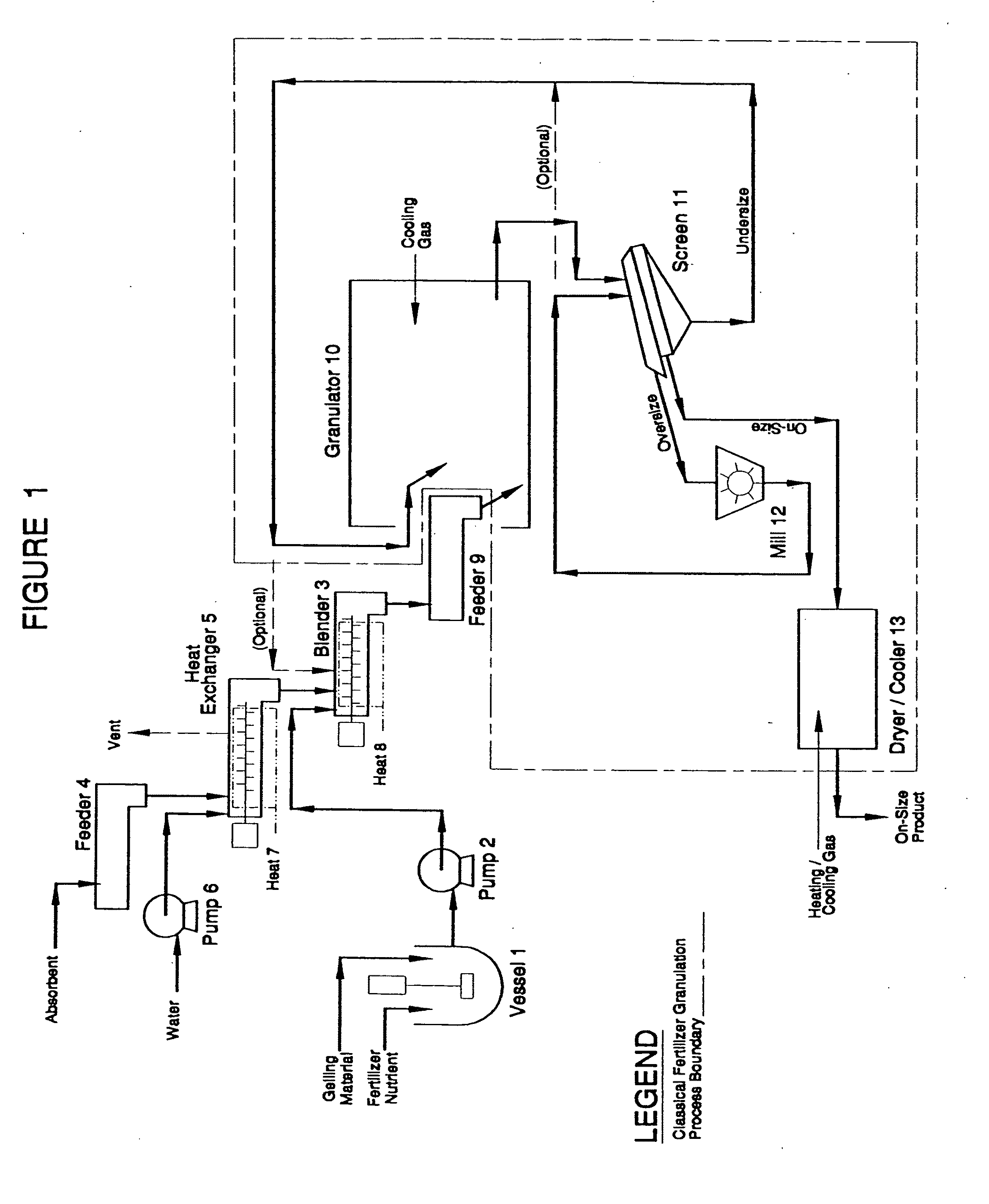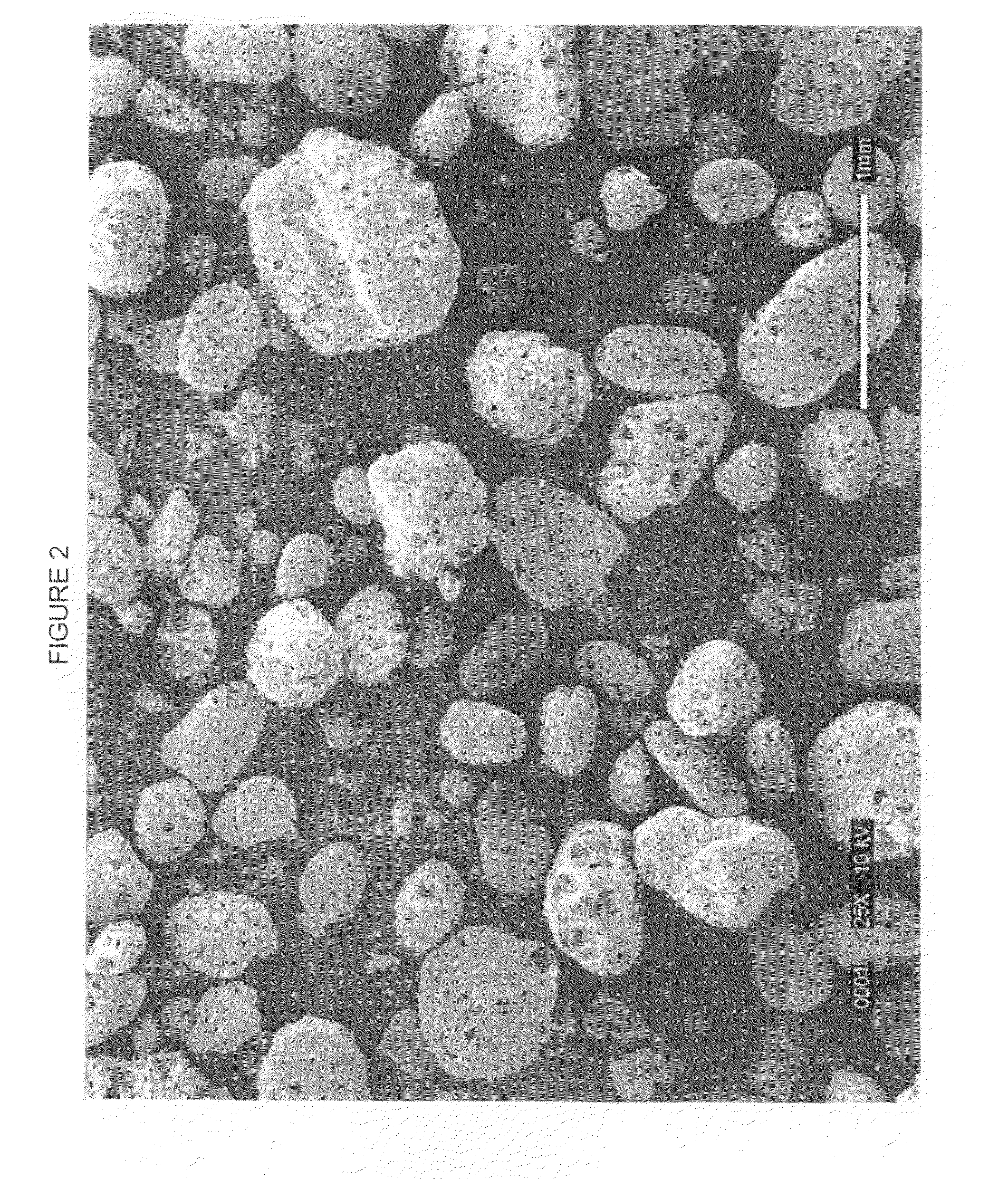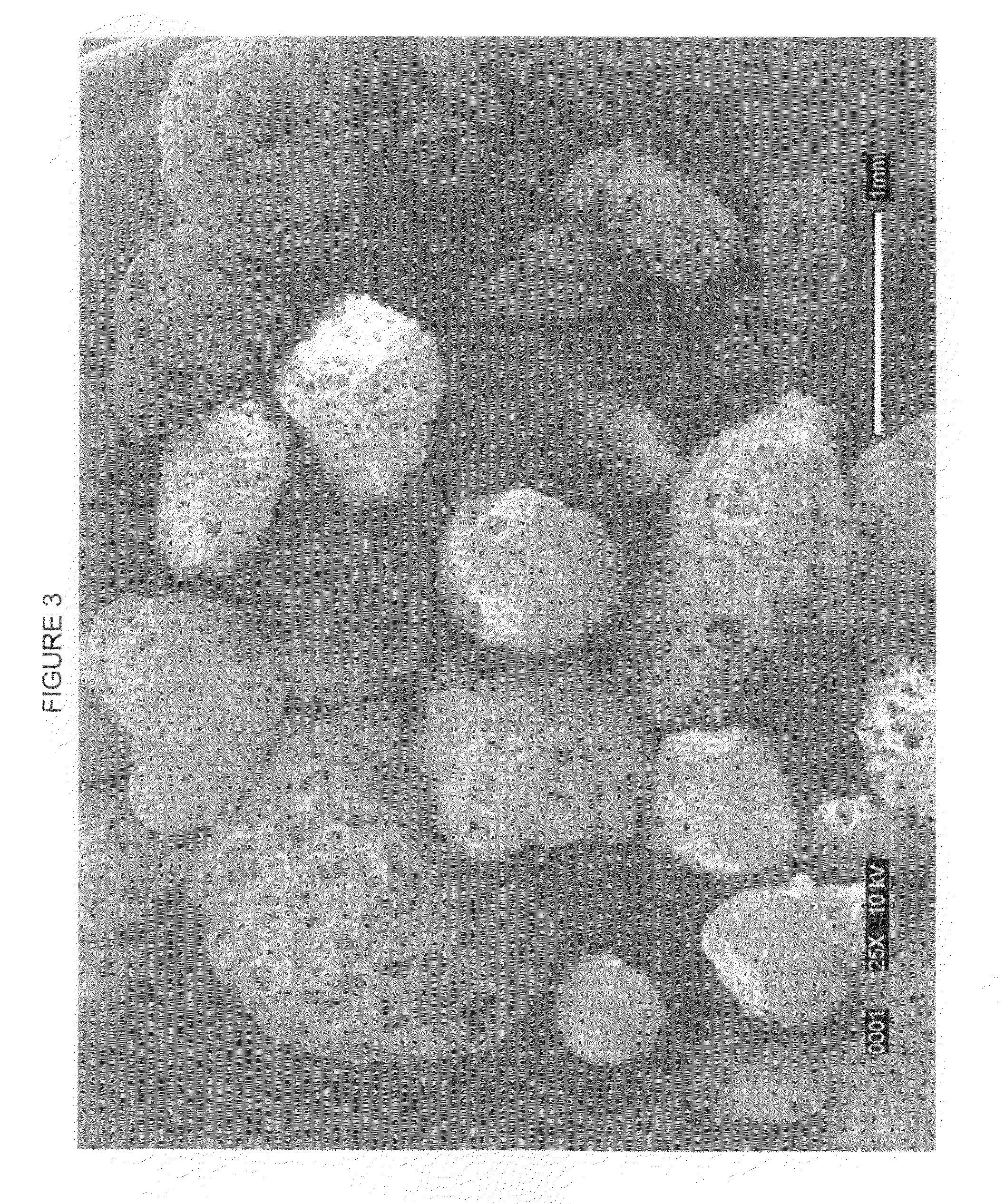Controlled release fertilizers containing calcium sulfate and processes for making same
a technology of calcium sulfate and fertilizer, which is applied in the field of controlled release agricultural products, can solve the problems of failure to capture fertilizer, water pollution, and ever increasing pollution
- Summary
- Abstract
- Description
- Claims
- Application Information
AI Technical Summary
Problems solved by technology
Method used
Image
Examples
example 1
[0106]Samples of the controlled release fertilizer of the present invention was made employing urea as the nitrogen source. These product samples were made by granulating an 85% urea solution, with and without corn starch equal to 1% of the final product, and pre-heated perlite 3-S (Perlite 3-S refers to commonly available, small sized perlite having particle size of 94% less than 840 microns and a bulk density of about 3 lb / ft3. In the exemplary compositions for the present invention, unless otherwise stated, the employed perlite was perlite 3-S). The urea and corn starch were combined in a laboratory beaker. (The corn starch employed in the compositions for the present invention is sometimes referred to as corn starch B810. This refers to commonly available corn starch that is a flash-dried bent corn starch having particle size wherein 94-96% of the particles are smaller than 74 microns and has a moisture content of 10%. In the exemplary compositions for the present invention, unl...
example 2
[0107]A pilot plant was set-up where urea was melted by a steam tube melter then blended with water to make an 85% solution and continuously fed at 109 lb / hr to a mix tank equipped with a homogenizer where corn starch powder was added at the rate of 1 lb / hr. The urea solution and the mix tank were maintained at a temperature of 210° F. Expanded 3-S perlite was continuously fed to a fluid-bed pre-heater at 7 lb / hr where it was heated with air until it was 320° F. to 327° F. (No water was applied to the perlite before hand and no steam was used to exfoliate it.) The perlite and the urea / corn starch mixture were then fed to a pugmill where most of the urea / corn starch mixture was absorbed while being held at a temperature of 196-197° F. The resulting slurry of perlite containing urea and corn starch plus excess urea and corn starch mixture was fed to a second pugmill. Oversize granules produced during the pilot plant operation were milled utilizing a Jacobson knife-bladed hammermill to...
example 3
[0109]Eighteen (18) grams of expanded 3-S perlite was placed in a laboratory vessel having an agitator and small vent. 20 ml of water were added to the vessel and mixed with the perlite, and it was heated so that it steamed for 1 hour at 220° F. 350 grams of a mixture of 85% urea solution with 1% of corn starch homogenized with it was added to the steaming perlite and mixed well. The mixture was poured onto a plastic surface to harden and then crumbled in a lab blender. The crumbled material was screened to −6+10 Tyler mesh (3.4 mm to 1.7 mm in diameter) and dried in a lab fluid-bed. The resulting material had a bulk density of 35 lb / ft3. The material was then placed in a rotating drum and rounded by blowing hot air on it at 240° F. The bulk density of the resulting material was 38 lb / ft3.
PUM
 Login to View More
Login to View More Abstract
Description
Claims
Application Information
 Login to View More
Login to View More - R&D
- Intellectual Property
- Life Sciences
- Materials
- Tech Scout
- Unparalleled Data Quality
- Higher Quality Content
- 60% Fewer Hallucinations
Browse by: Latest US Patents, China's latest patents, Technical Efficacy Thesaurus, Application Domain, Technology Topic, Popular Technical Reports.
© 2025 PatSnap. All rights reserved.Legal|Privacy policy|Modern Slavery Act Transparency Statement|Sitemap|About US| Contact US: help@patsnap.com



